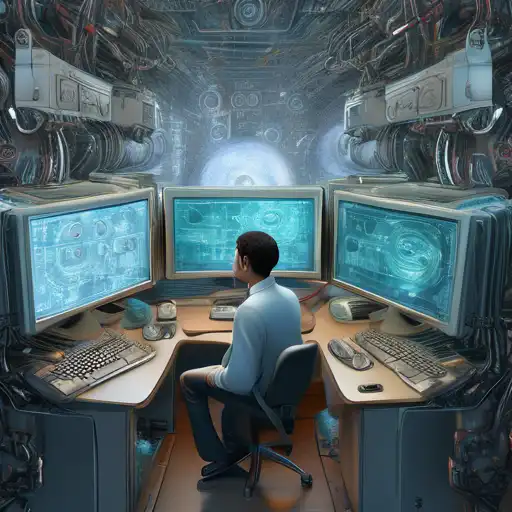Empowering Machines with Sight: The Future of Computer Vision
In the realm of artificial intelligence, computer vision stands out as a transformative technology that enables machines to interpret and understand the visual world. By leveraging digital images from cameras and videos and deep learning models, machines can accurately identify and classify objects—and then react to what they "see."
Understanding Computer Vision
Computer vision is a field of artificial intelligence that trains computers to interpret and understand the visual world. Using digital images from cameras and videos and deep learning models, machines can accurately identify and classify objects—and then react to what they "see."
From facial recognition systems to autonomous vehicles, the applications of computer vision are vast and varied. This technology is not just about seeing; it's about understanding and making decisions based on visual data.
How Computer Vision Works
At its core, computer vision involves the following steps:
- Image Acquisition: This is the process of capturing an image or video from a camera or other sources.
- Image Processing: The acquired image is then processed to enhance quality or extract useful information.
- Feature Extraction: Key features are identified from the image, such as edges, textures, or shapes.
- Detection/Segmentation: Objects within the image are detected or segmented for further analysis.
- Recognition: The system recognizes or classifies the objects based on the extracted features.
Applications of Computer Vision
Computer vision has a wide range of applications across various industries:
- Healthcare: From diagnosing diseases through medical imaging to assisting in surgeries, computer vision is revolutionizing healthcare.
- Retail: Automated checkout systems and inventory management are just a few ways retail is benefiting from computer vision.
- Automotive: Autonomous vehicles rely heavily on computer vision to navigate safely.
- Security: Surveillance systems use computer vision for facial recognition and anomaly detection.
The Future of Computer Vision
As technology advances, the potential for computer vision continues to grow. With the integration of artificial intelligence and machine learning, computer vision systems are becoming more accurate and efficient. The future may see computer vision technologies that can interpret emotions or predict human behavior, opening up new possibilities for interaction between humans and machines.
In conclusion, computer vision is a rapidly evolving field that is teaching machines to see and understand the world around them. Its applications are transforming industries and improving lives, making it one of the most exciting areas of technology today.
